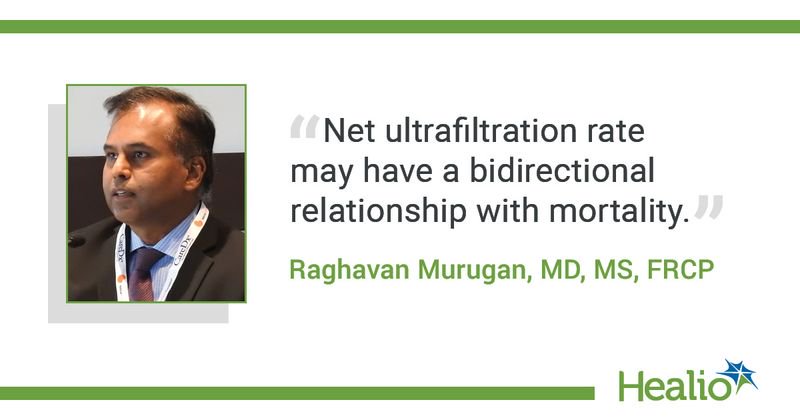Speaker: Target net ultrafiltration rate remains unknown for ICU patients with AKI
BOSTON — While both fast and slow net ultrafiltration rates correlate with mortality in critically ill patients with AKI, the best rate remains unknown, according to a speaker at the National Kidney Foundation Spring Clinical Meetings.
“If you look at patients who are on kidney replacement therapy in the ICU, over two-thirds of the patients have fluid overload if you use our definition of over 5% of bodyweight,” Raghavan Murugan, MD, MS, FRCP, a professor of critical care medicine and clinical and translational science, and a director of the program for critical care nephrology at the University of Pittsburgh, said. He added, “Fluid removal is widely used by clinicians to treat fluid overload in the ICU, and it is supported by Kidney Disease: Improving Global Outcomes and Kidney Disease Outcomes Quality Initiative ... However, we still don’t know the best way to remove fluid from ICU patients.”

Murugan referenced the RENAL study that demonstrated net ultrafiltration rates greater than 1.75 mL/kg per hour compared with rates of less than 1.01 mL/kg per hour and 1.01 mL/kg per hour to 1.75 mL/kg per hour correlated with lower survival and renal recovery in patients treated with continuous kidney replacement therapy.
“So, we then asked the question: What is the relationship between the underlying patient’s severity of fullness and the rate at which fluid should be removed?” Murugan said while referencing another study from 2020.
Murugan and fellow researchers found the sicker a patient is, the more likely the patient will react poorly to a higher rate of net ultrafiltration. Additionally, a mediator analysis revealed that an early net ultrafiltration greater than 1.75 mL/kg per hour was independently associated with increased hospital mortality.
Researchers validated that the speed of net ultrafiltration rates can affect the effectiveness of treatment. While a slower net ultrafiltration rate could increase a patient’s exposure to organ edema, a faster one could predispose a patient to organ ischemia. However, the speed threshold at which fluid removal can cause these reactions is unknown, Murugan said.
“In summary, net ultrafiltration rate may have a bidirectional relationship with mortality. Both slower and faster rates might be associated with increased risk of death,” Murugan said. “There’s a wide variation in current clinical practice. Each clinician, even in our own hospital, does it differently. We need quality clinical trials to answer this question.”

